If you’ve recently visited a jewelry store or are familiar with the gem business, you’re likely aware of the crucial role diamond testers play. These testers go beyond standard devices, as they are specifically designed to verify the authenticity and electrical conductivity of diamonds.
However, it’s not only natural mined diamonds that find their way into jewelry stores. Lab-created diamonds have also gained popularity in the market. This leads us to the intriguing question: Can lab-created diamonds successfully pass a diamond tester? Answering this question concisely is a challenge, as a detailed explanation is required.
There are multiple factors and criteria to consider before confidently showcasing a diamond in your shop window. If you’re eager to acquire more valuable insights on diamond testing, continue scrolling down for helpful information on this subject.
DESIGN YOUR OWN ENGAGEMENT RING: START WITH A SETTING OR START WITH A DIAMOND. IT’S REALLY UP TO YOU!
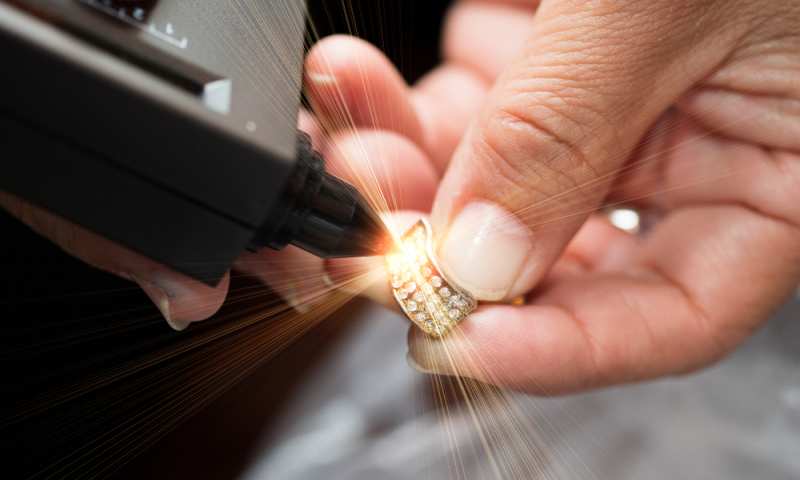
How Does A Diamond Tester Work?
A diamond tester is a compact device commonly found in jewelry stores. Its purpose is to verify the authenticity and electrical conductivity of a diamond, making it an essential tool in the industry.
These testers typically come in two types: heat-sensitive and electricity-sensitive. The heat-sensitive tester detects variations in heat levels and determines whether a diamond is real or fake based on the response. Similarly, the electricity-sensitive tester operates by assessing electrical conductivity levels.
Both types of testers are straightforward to use and manage, providing reliable results.
Now, let’s address the question of whether lab-created diamonds can pass a diamond tester. In most cases, lab-created diamonds can indeed pass the test. However, it’s important to note that there may be poorly made lab-created diamonds lacking essential characteristics that could be identified during examination.
Lab-grown diamonds, particularly those made of carbon, will likely pass the visual inspection portion of the test. However, experts with a keen eye for composition and electrical conductivity can often identify flaws that distinguish lab-created diamonds from natural mined diamonds.
In addition to lab-created and natural diamonds that pass the test, there are standard fake diamonds that are virtually impossible to pass due to the meticulous precision of experts.
While being in the jewelry business exposes you to various types of diamonds, it also allows you to identify those that are unlikely to pass the test.
Lab-created diamonds come in different types, including stimulant and cultured diamonds. Stimulant diamonds are not created from scratch but are rather produced in a laboratory. They have distinct chemical and physical compositions that can be discerned through careful examination.
Cultured diamonds, on the other hand, have a natural foundation, and their scratches are entirely natural. They are often marked with a number to prevent them from being used for resale purposes, further distinguishing them.
Within these categories, there are various subtypes:
- Simulated diamonds:
- Diamond Nexus Simulant, primarily composed of carbon.
- Cubic Zirconia Simulants, an affordable option among simulated diamonds.
- Moissanite Lab-created gemstones, highly valuable and visually distinctive.
- Cultured diamonds:
- HPHT diamonds, created through high-pressure and high-temperature processes, with major designs including cubic, split-sphere, and belt press.
- CVD diamonds, made from a mixture of carbohydrons using chemical vapor deposition.
By understanding these distinctions, you can navigate the world of diamond testing and differentiate between various types of lab-created diamonds available in the market.
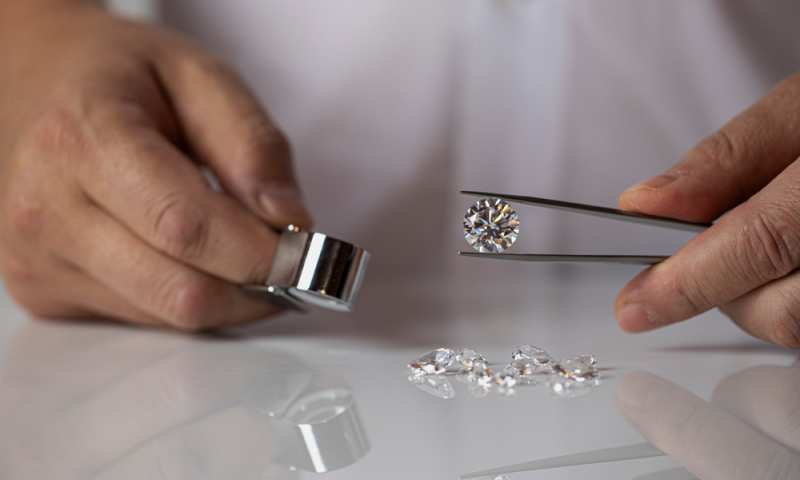
The 4Cs of Diamonds – Explained
By now, you’re likely familiar with the 4Cs, which serve as a standardized rating system for diamonds. If you’re not acquainted with them, it’s the perfect time to enhance your knowledge on the topic. In short, the 4Cs represent:
- Clarity
- Cut
- Color
- Carat
You may have observed jewelers examining diamonds with special goggles in jewelry stores. They are precisely assessing the qualities we’re about to explain, so let’s dive into it.
Clarity:
As the name implies, clarity refers to the purity and transparency of a diamond. It involves carefully evaluating any minor flaws and inclusions that may be difficult to see with the naked eye. Jewelers employ a clarity scale to determine the diamond’s clarity, with the highest rating being FL (flawless).
Related Read: Can SI Diamonds Pass a Diamond Tester?
Cut:
A diamond intended for swift sale should be beautiful and of high quality, which emphasizes the importance of a precise cut. Regardless of the diamond’s shape, the cutter must execute the process with utmost precision. Blunt curves and visible scratches during cutting diminish the diamond’s value significantly.
Color:
While it may be tempting to envision a completely transparent and colorless diamond, such specimens are quite rare. Discovering a 100% colorless diamond is a rarity, and if the opportunity arises, it’s highly coveted. Similar to clarity, there is a color grading scale that jewelers use to assess a diamond’s color. They compare the diamond being evaluated with others in their collection. Transparent diamonds are the most desirable, and lab-grown diamonds are typically cultivated to be as close to colorless as possible. Yellow and brown diamonds hold the least value, while a colorless diamond is considered a treasure.
Carat:
For many, carat weight is the most significant category, especially when determining the size of an engagement ring, for instance. As with the other criteria, the number of carats impacts the value of the diamond. However, there’s a caveat: even if a diamond has a high carat weight, if the other factors—color, clarity, and cut—are not optimal, the diamond’s value can diminish significantly. While a higher carat weight generally commands a higher price, one should also consider the overall appearance and shape of the diamond.
Some individuals might add confidence as a fifth criterion when purchasing diamond jewelry. Both the buyer and the seller need to possess a certain level of self-assurance. Customers should express their preferences clearly, while well-trained salespeople should be confident in their negotiation skills, offering compelling deals that customers find irresistible. Whether it’s a necklace, bracelet, or ring, confidence plays a vital role in the transaction.
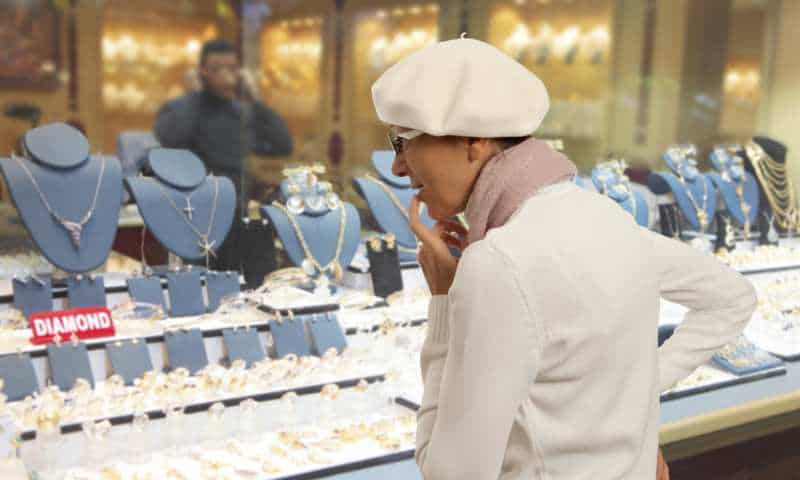
How To Spot A Fake Diamond?
Lab-created diamonds should not be equated with fake diamonds, as they are simply a type of diamond. Fake diamonds, on the other hand, are entirely different and are made of alternative materials with a different chemical composition.
While it’s inevitable that people will bring fake diamonds to jewelry stores, you can learn how to spot them, whether you’re a professional or not. Here are several methods you can use:
- Thermal Test:
Obtain a diamond tester, which can be purchased online. Follow the instructions provided with the tester to determine if your diamonds or gems are genuine. - Facet Doubling:
Use a jeweler’s loupe to closely examine the diamond. Look for facets on the back of the diamond. Take your time and observe carefully. - UV Light:
Use a UV light or lamp, commonly used in trade, to check the authenticity of a diamond. If the diamond exhibits any color other than the standard blue when under the light, it is likely a fake. - Newspaper Test:
Grab any newspaper and place the gem you are testing face-down on a black dot. If you can see the shape of the letters clearly, the diamond is real. If the letters appear blurry or unclear, it is likely a fake. - Water Test:
This is a non-destructive way to check if a diamond is fake. Place the diamond in a glass of water and observe its behavior. If it sinks immediately, it is likely real. If it floats, it is likely a fake. - Markings Test:
Examine the diamond with a magnifying glass. Look for markings that may indicate its quality and authenticity, such as jeweler’s markings denoting carat weight or engravings indicating materials like “10k” or “Ster” for sterling silver. Some diamonds may also have a traceable code indicating the original jeweler. - Shatter Test:
Note that this test can potentially damage the gem and should only be performed when you are confident it is not a real diamond. Hold the gem with pliers and heat it with a candle or lighter for about 40 seconds. Then, drop the gem into water. If it shatters, it is likely a fake. Use protective goggles for safer handling of the gem.
Remember, these tests should be conducted with caution and professional expertise whenever possible to ensure accurate results.
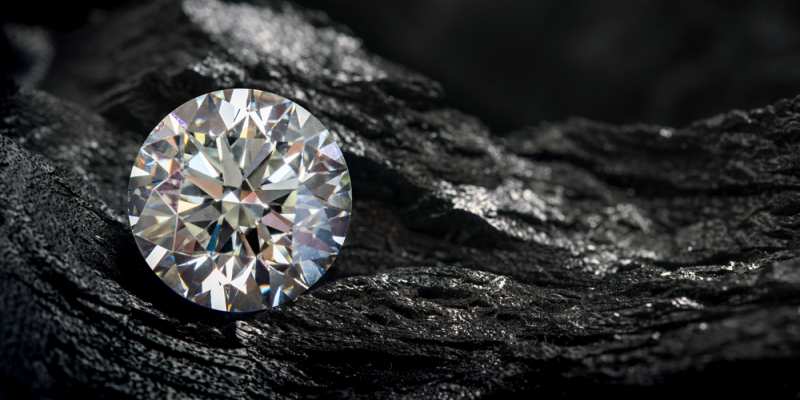
Real Vs. Lab-Diamonds
Without a doubt, both real diamonds and lab-created diamonds are of good quality, but there are still some differences between them. Let’s explore these differences and understand how they can impact your choice.
Price:
The most obvious distinction between the two is the price. Over time, the prices of both types of diamonds can fluctuate. In the past, lab-created diamonds were quite expensive, but that has changed. Currently, the prices of natural mined diamonds have skyrocketed due to their limited availability.
Value:
The value of a diamond encompasses its natural and synthetic value, which it retains over the years. Natural diamonds can retain up to 50% of their value, while lab-created diamonds may not hold their value as well. If you want to learn more about the value of lab-created diamonds, further information can be found here.
Sustainability:
In terms of sustainability, lab-created diamonds have a slight advantage. These diamonds are environmentally friendly compared to natural mined diamonds, which have a significant impact on climate change. Mining diamonds can involve unethical practices in some cases. Therefore, it is worth considering alternative options and understanding that lab-created diamonds are both economically and environmentally friendly.
Look:
To the naked eye, it is unlikely that anyone can distinguish between a real diamond and a lab-created diamond unless they are informed. While there may be some slight differences in appearance, it is challenging to discern them from a distance. The only noticeable aspect that may differentiate lab-created diamonds from natural ones is the presence of small inclusions or blemishes, which are difficult to identify without professional assistance.
Overall, understanding these differences can help you make an informed choice when considering diamonds, whether they are lab-created or natural mined.
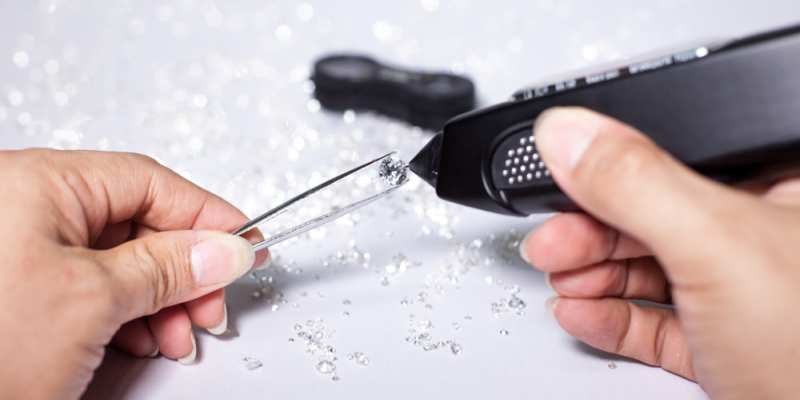
Final Words
As we conclude, let’s address the question: Can lab-created diamonds pass the diamond tester?
In short, yes, most lab-created diamonds can pass the diamond tester. Specifically, diamonds like carbon lab diamonds typically meet the criteria in terms of physical appearance. However, they may face challenges when it comes to composition.
It’s worth noting that there are various types of lab-created diamonds available today, and numerous tests can be performed to determine if a diamond is real or fake. Even with minimal experience, you can learn how to conduct these tests effectively.


